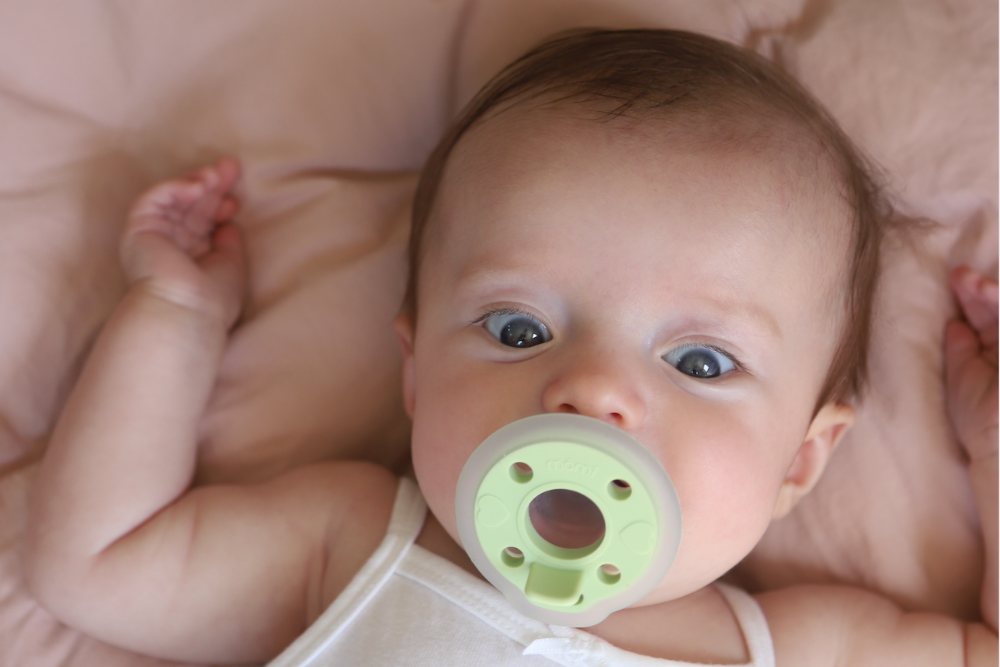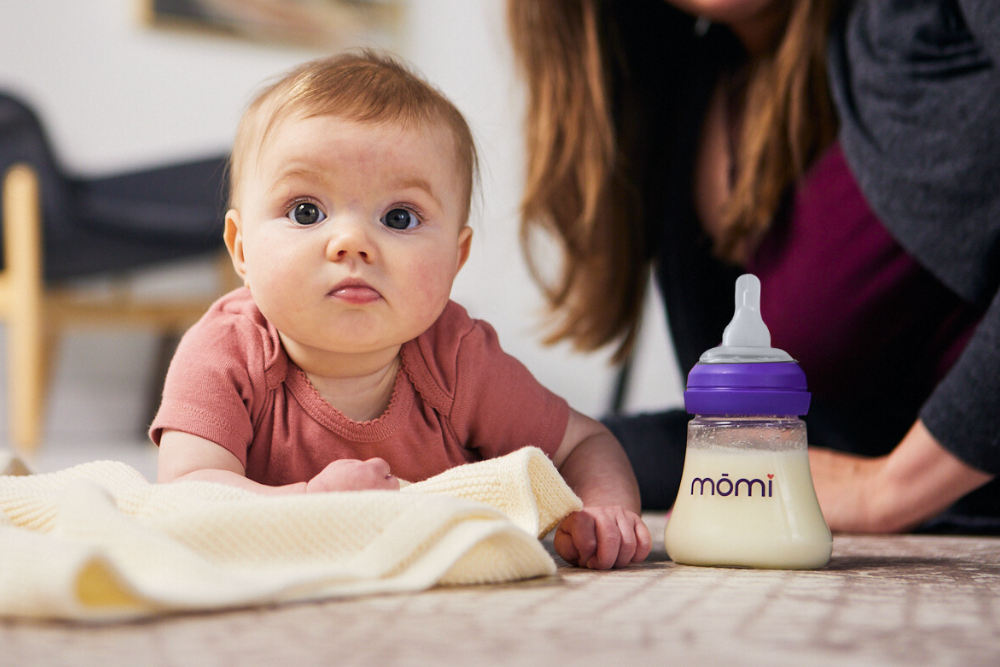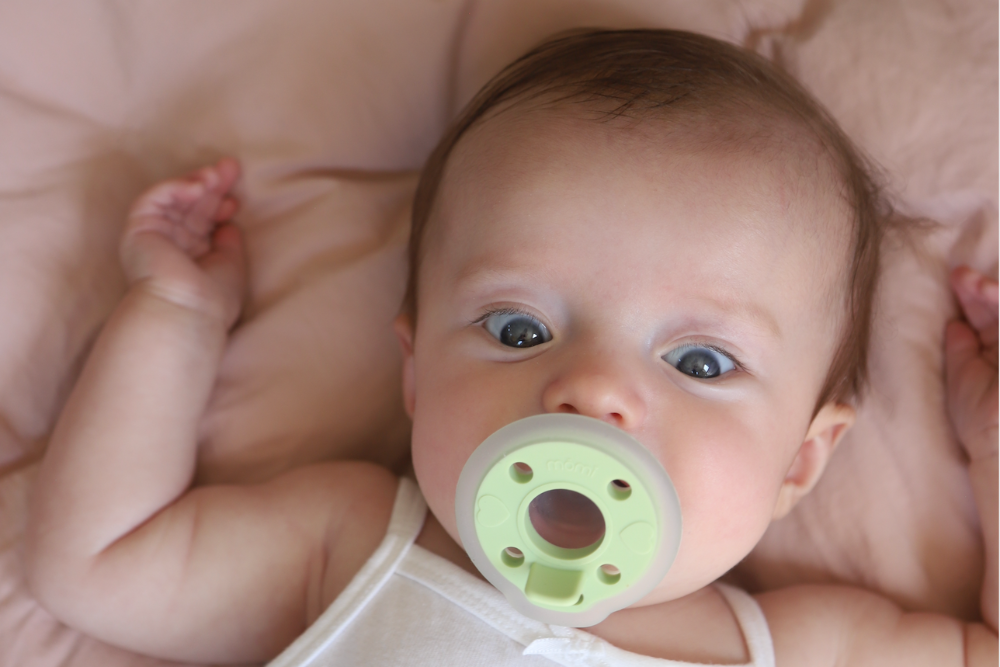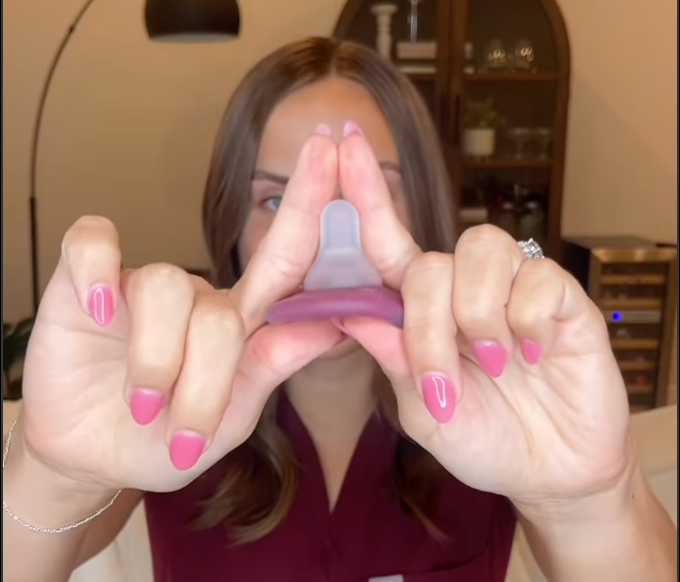Many parents panic when their baby won’t take a pacifier. If your little one spits it out, refuses it, or cries when you try, you’re not alone. Pacifier refusal is common, especially for breastfed babies. With the right approach—and the right pacifier—many families find success.
why babies refuse pacifiers
Pacifiers are not one-size-fits-all. Some babies dislike how a specific pacifier feels; others need a shape that supports their natural latch. Babies practice sucking in utero, so a pacifier that doesn’t align with their oral motor patterns may feel foreign and fail to soothe.
For breastfed babies, shape is especially important. A pacifier that’s too flat, narrow, or stiff can frustrate a baby accustomed to the soft, stretchy feel of the breast.
common reasons babies refuse pacifiers
- Timing: Offering one when baby is hungry or upset often leads to frustration.
- Texture: Sensitivity to silicone or rubber textures; some babies need repeated gentle exposure.
- Smell: Natural rubber or certain plastics may have an odor that a baby dislikes.
- Anatomy: Oral tethers, high palates, or other anatomical differences can shape preferences.
the role of pacifier shape for breastfed babies
If your breastfed baby won’t take a pacifier, the nipple shape might be the reason. The correct design can trigger natural suckling reflexes and help strengthen oral skills used in breastfeeding.
look for these features
- Symmetry: A symmetrical pacifier sits comfortably no matter how it’s positioned.
- Soft, flexible silicone: Mimics the feel of skin and moves with baby’s mouth.
- Rounded tip with gradual slope: Lets the tongue cup the nipple as in nursing, and encourages a wide gape for a healthier latch.
Be wary of pacifiers that merely “look” breastlike — the important part is how they perform in the mouth: maintain a round shape, support suction, and resist collapsing.
tips for introducing a pacifier when baby is reluctant
Try these gentle strategies:
- Offer when calm, not hungry. Try after a feeding, during drowsy moments, or while rocking.
- Add a familiar taste. Lightly dip the pacifier in breastmilk or formula to encourage sucking.
- Use gentle encouragement. Hold the pacifier near baby’s lips and let them root—don’t force it.
- Try different positions. Some babies accept a pacifier better upright or while being rocked.
- Stay consistent and patient. Frustration can make baby associate the pacifier with negative feelings.
when a pacifier isn’t the right fit
Some babies will never accept a pacifier—and that’s perfectly fine. If refusal persists, lean on other soothing strategies:
- Swaddling
- Rocking
- Babywearing
- Gentle skin-to-skin contact
faq: the mōmi pacifier for breastfed babies
What makes the mōmi pacifier different?
The mōmi pacifier was designed with lactation professionals to support breastfeeding skills. Its rounded tip and natural slope help babies maintain a wide, breastlike latch.
Is the mōmi pacifier safe for a newborn?
Yes. The nipple is 100% medical-grade silicone, soft enough for newborns, and free from BPA and harmful chemicals. The pacifier includes breathing holes and a dedicated clip slot for safety.
Will the mōmi pacifier cause nipple confusion?
Many experts prefer the term “nipple preference.” Babies develop preferences based on comfort and anatomy. The mōmi pacifier is designed to support an ongoing breastfeeding relationship, helping baby build a healthy oral foundation for their future development.
Why do breastfeeding parents recommend it?
Parents report that the mōmi pacifier is one of the few pacifiers their babies will accept thanks to its soft, flexible silicone and breastlike performance. It was created with lactation experts to support oral development.





